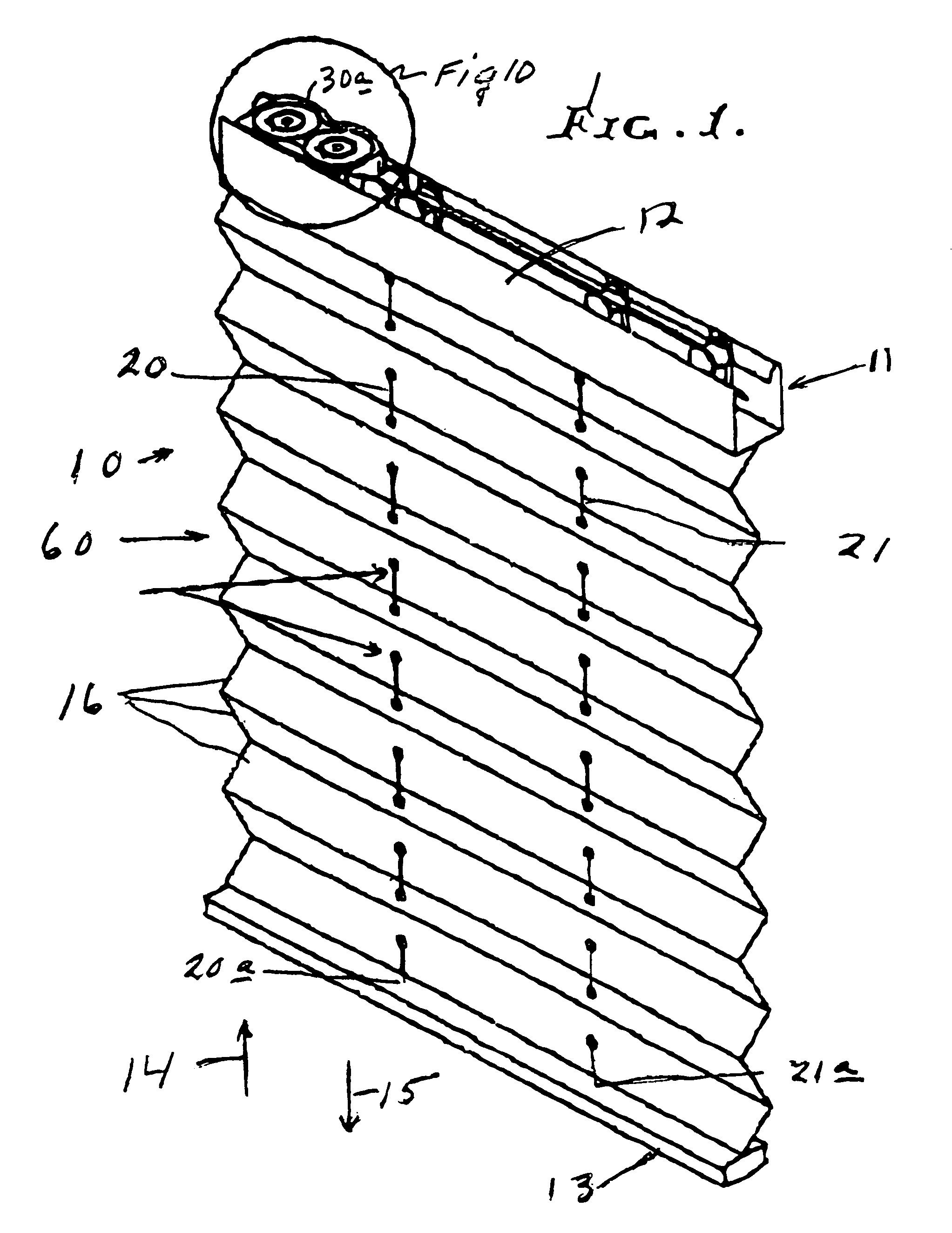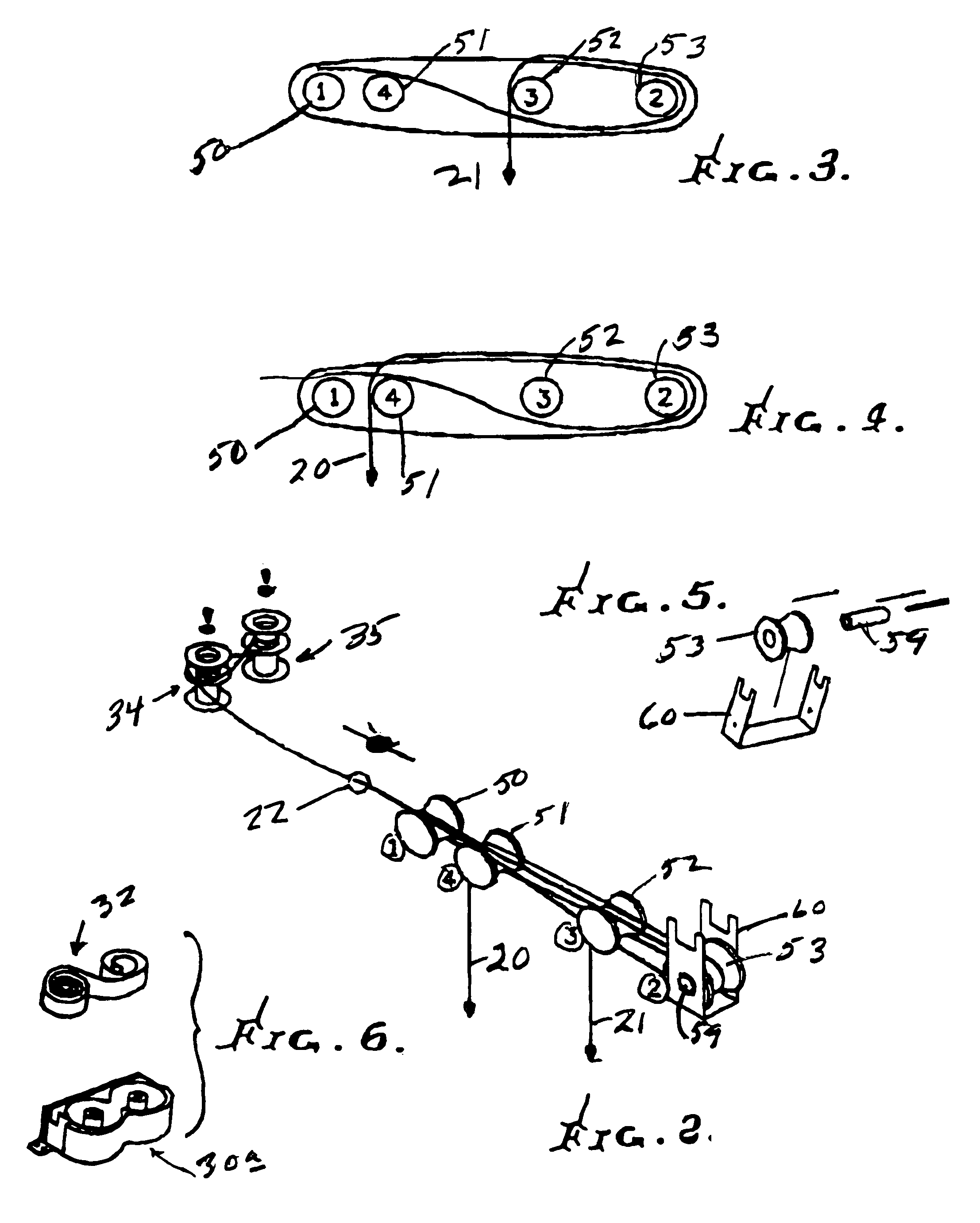Pull down, push up, shade apparatus
a technology of shade apparatus and push-up, which is applied in the direction of shutters/movable grilles, door/window protective devices, wing arrangements, etc., can solve the problems of inability to operate correctly, inaccurate or unwanted shade or blind movement, and possible strangulation, so as to achieve convenient operation
- Summary
- Abstract
- Description
- Claims
- Application Information
AI Technical Summary
Benefits of technology
Problems solved by technology
Method used
Image
Examples
Embodiment Construction
[0042]In FIGS. 1, 2 and 7, a pleated shade or Venetian blind assembly 10 is capable of height adjustment without use of external pull cords. It includes an upper elongated support 11 which may be in the form of a metallic or plastic channel or rail 12 which may be otherwise hollow, attachable to a window frame, as by fastener. The assembly also includes a lower elongated slat member 13 that is to be simply and easily manually adjusted up or down, as indicated by arrows 14 and 15, and to selected levels. Shade pleats 16 are located between and connected to 12 and 13, as shown. The pleats may be foldable, and expand or separate as member 13 is urged downwardly, to selectively adjusted height position, for example controllably covering a window. The pleats or slats collapse toward one another as the member 13 is elevated toward 12, to adjusted position or positions. Pleats or slats expand as at 60, from stacked positions as at 61 in FIG. 9.
[0043]Primary lines or cords are provided to e...
PUM
 Login to View More
Login to View More Abstract
Description
Claims
Application Information
 Login to View More
Login to View More - R&D
- Intellectual Property
- Life Sciences
- Materials
- Tech Scout
- Unparalleled Data Quality
- Higher Quality Content
- 60% Fewer Hallucinations
Browse by: Latest US Patents, China's latest patents, Technical Efficacy Thesaurus, Application Domain, Technology Topic, Popular Technical Reports.
© 2025 PatSnap. All rights reserved.Legal|Privacy policy|Modern Slavery Act Transparency Statement|Sitemap|About US| Contact US: help@patsnap.com



